Leaving Villafranca del Bierzo
On the advice of our friend Lucas we left the palace and headed down to the river valley route to O Cebreiro. We passed a pilgrim statue on the road across the bridge out of Villafranca del Bierzo.
On the other side of the river, ancient houses clung to the side of the hill in defiance of time and weather.
We passed a picturesque bridge and began climbing.
Looking back we could see the ancient castle that almost glowed in the dawn mist.
Pereje
We passed a couple of pilgrims going the opposite way – they had decided to take the high road. We passed under an overpass and began our own climb. An extraordinary sight greeted us – blue painted trees – and clouds hung just above us in the valley as we made a steady roadside climb towards Pereje. I wondered if this was an environmental installation by a local artist – perhaps to raise awareness about global deforestation. Or perhaps the smurfs had been busy…
Trabadelo
Trabadelo is memorable as it rained horse chestnuts on us – one left a bruise on my arm, the next one cut a small gash in my hand. You would definitely need personal protective equipment to harvest these nuts!
There must be a sawmill nearby as there are stacks of fresh lumber stickered for drying next to the road.
Over coffee, we admired the amazing carving on the bar.
The tortilla patata was filling and sustaining. We had a long climb ahead through Vega de Valcarce and Ruitelan.
O Cebreiro
O Cebreiro stands 1300m up a mountain – the second highest since the Pyrenees. It is a seriously long slog.
But it is a fascinating place. The pre-romanesque church was founded in 836AD – nearly 400 years before St Francis of Assisi made his pilgrimage to Santiago in 1210. Inside is amazingly spacious for a building of this age – and it’s partly due to the floor being sunk into the hill.
We were amazed to find the original stone baptismal font still in place. But the place is known for something far more recent.
Where yellow arrows come from
On a rainy foggy day in 1982, the local priest from O Cebreiro found a pilgrim, wandering and unsure of the route. The priest provided food and shelter and realised the problem. With no modern guides and only a few official markers, other pilgrims may not be so fortunate as the one he saved. So he went to some local road-menders who were marking the road with yellow lines, and asked for some paint and a brush. They weren’t about to refuse a priest, so, armed with his brush, the priest set out in his little Fiat car and painted yellow arrows from town to town across Galicia. And so the yellow arrows were born. That priest was Don Elias Valiña Sampedro. To him, we owe the ease with which we can navigate the Camino. We found his grave and memorial.
The Miracle of O Cebreiro
And of course, there is the story of a local miracle. According to Rick Steves:
In the chapel to the right of the main altar is a much-revered 12th-century golden chalice and reliquary, which holds items relating to a local miracle: A peasant from a nearby village braved a fierce winter snowstorm to come to this church for the Eucharist. The priest scoffed at his devotion, only to find that the host and wine had physically turned into the body and blood of Christ, staining the linens beneath them — which are now in the silver box.
O Cebreiro lies on the mountain pass into Galicia. We were told to expect an immediate change in the weather as this was the final mountain range before the coast. And as if to confirm our location, it rained. The town is built from local stone in a traditional style that possibly goes back to the Iron Age. Some of the buildings resembled traditional Celtic round houses, but perhaps this was more about directing the strong winds away from the stress points on the buildings.
Codex Calixtinus
According to the C12th Codex Calixtinus:
It is difficult to get wheat-bread and wine. However with plenty of rye bread and cider, livestock and work-horses, milk and honey and enormous seafish, there is little lacking. And there is gold and silver, fabrics and furs from the forests and other riches, as well as Saracen treasure.
The Galicians are more like us French people than other Spanish savages, but nevertheless they can be hot-tempered and litigious.
Today we had no problem getting wheat-bread and wine, and the local Galician food was delicious! As for the Galicians, we found them welcoming and warm in direct contrast with the weather.
We found lodging at the bar – they had just turned away a couple of young Americans. We addressed them in my rudimentary Spanish and the proprietors quickly found us a room across the road. Dinner was hearty and filling, and the tino refreshing.
We are in the presence of a unique heritage. And we gave thanks to our Camino angel who recommended that we not miss this extraordinary place!
We walked the length of the town. In the distance, we could see the massive freeway viaducts like a tiny ant trail way down in the valley below.
After a hearty dinner and warmed by the log fire with a glass or three of the local red wine we were content and at length went across the street to our lodging.
________________________________________
INDEX – If you wish to follow our journey from the start, or jump in to any of the Camino posts,
here is a link to the index page – also found in the navigation bar at the top of this blog
________________________________________

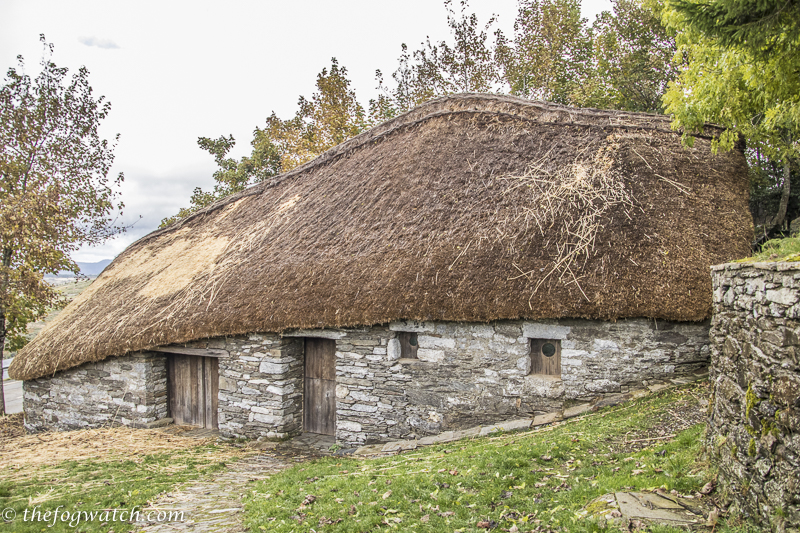
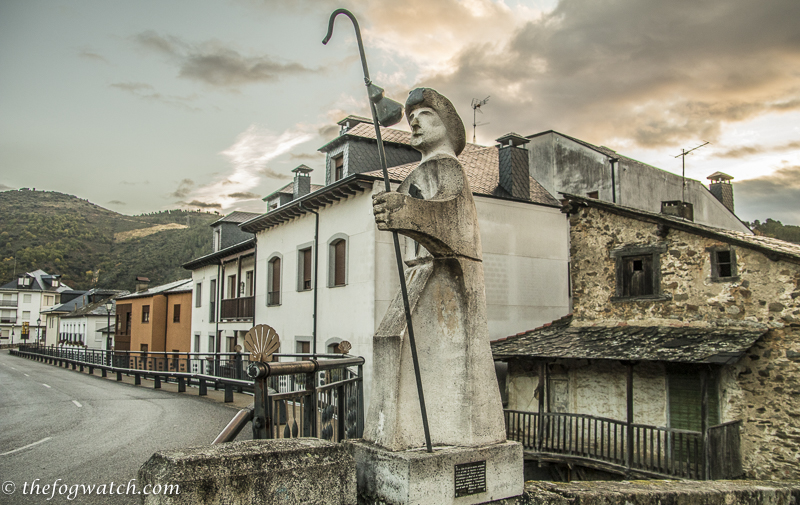
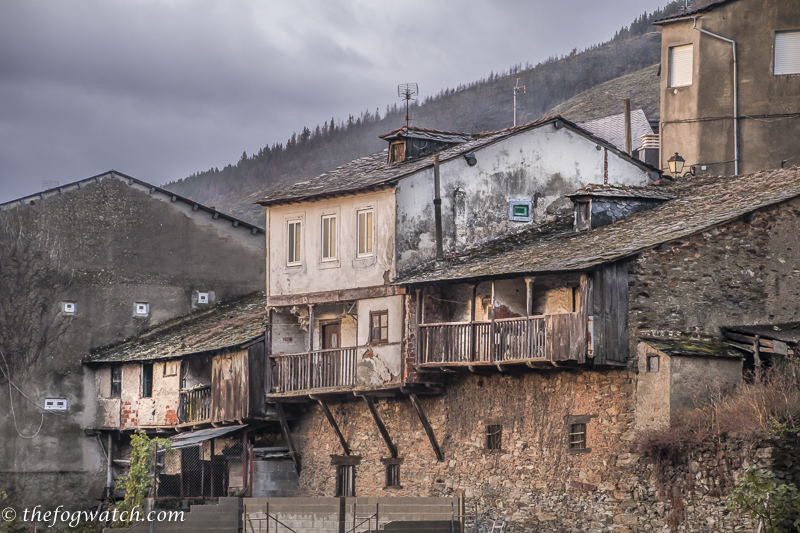
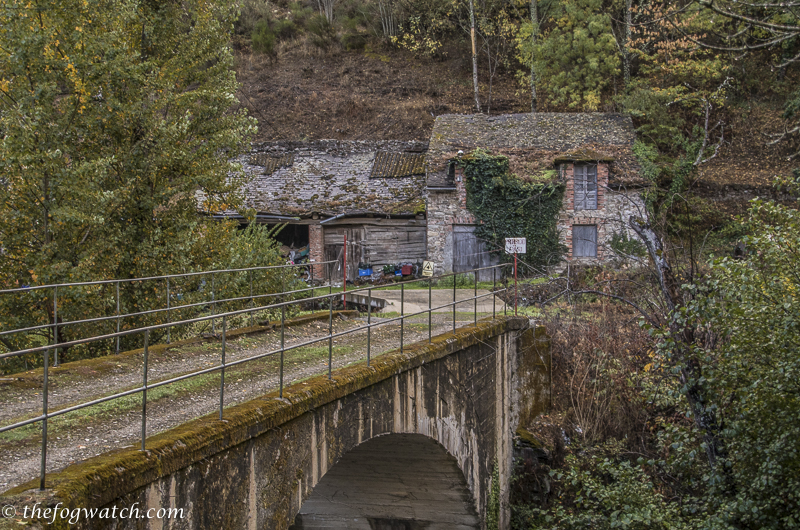
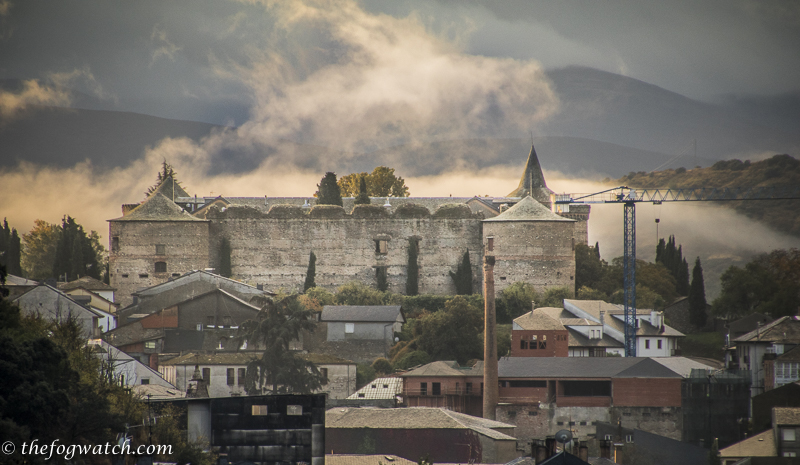
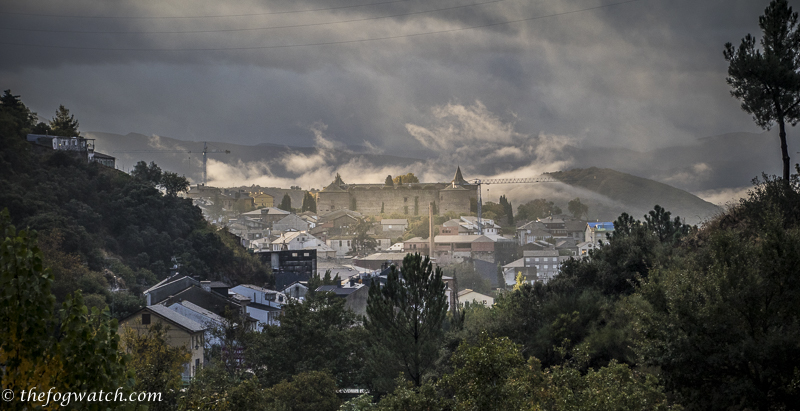

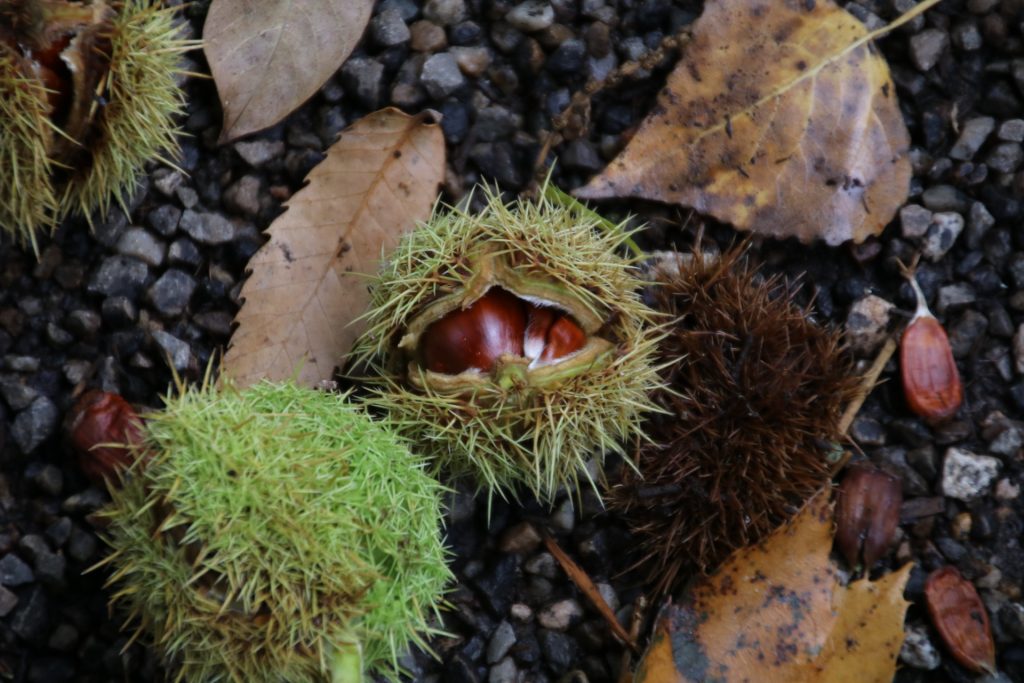
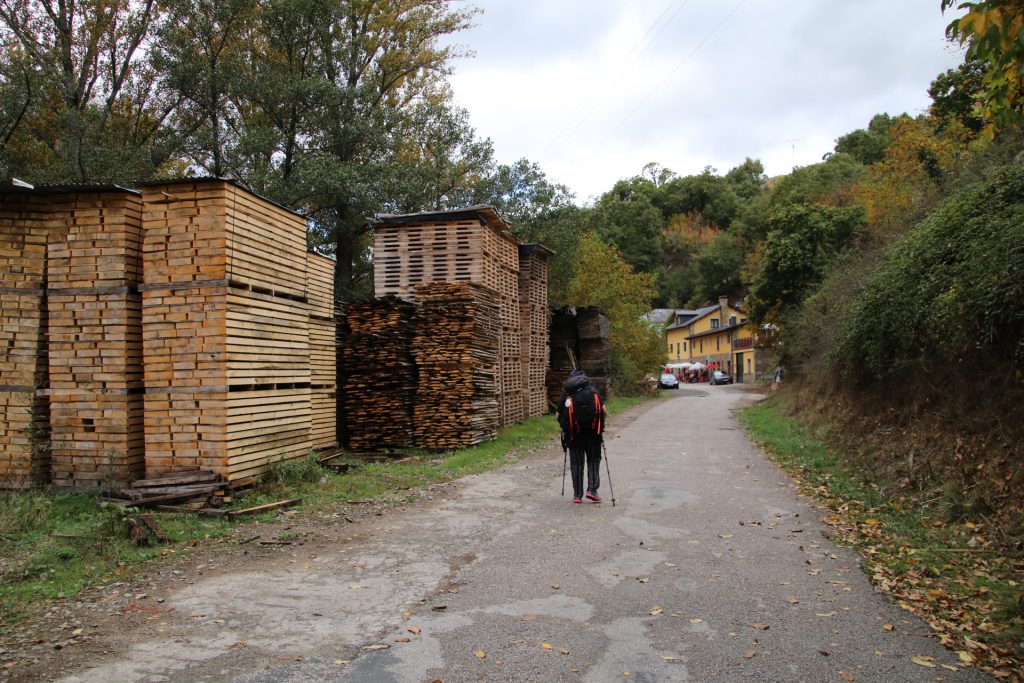

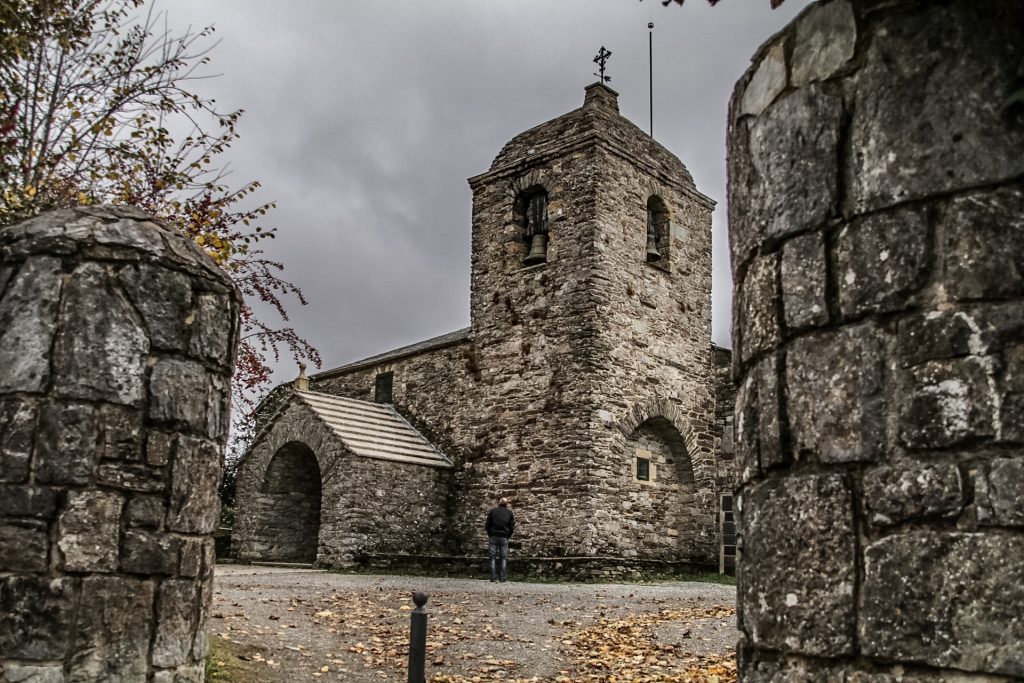
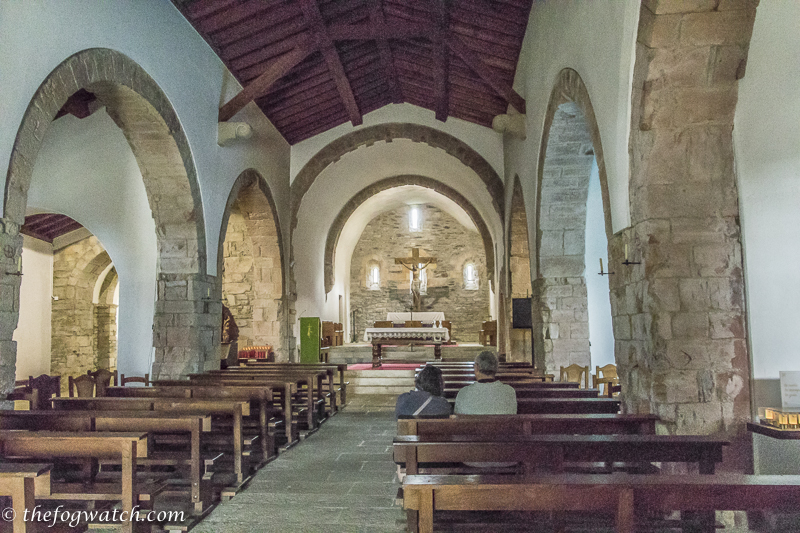
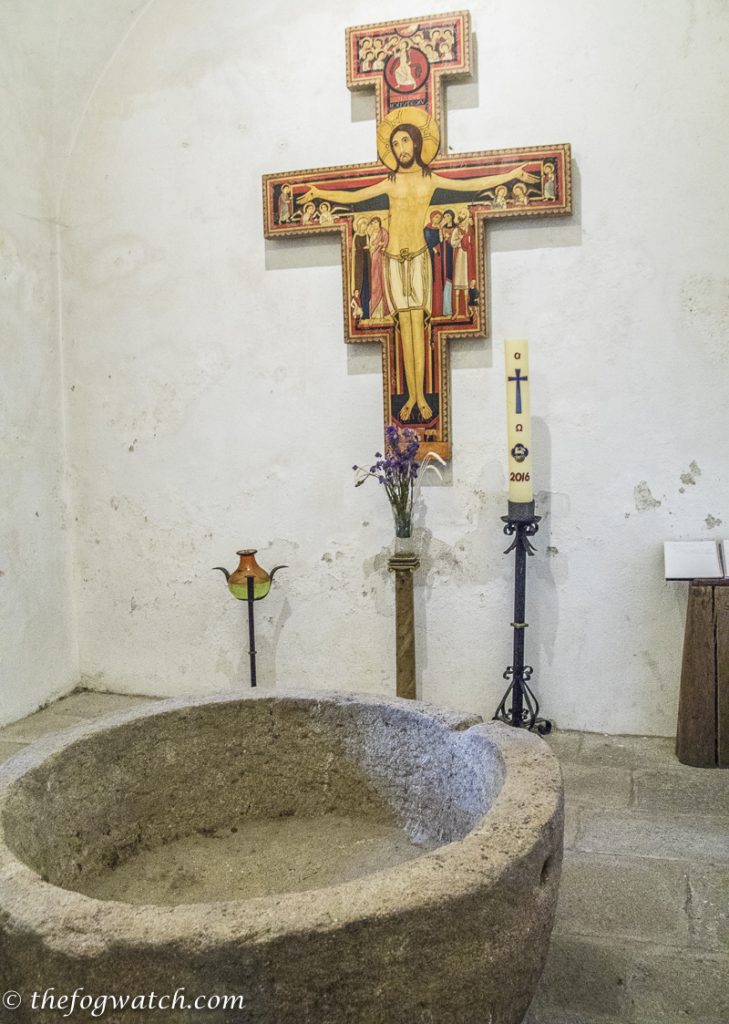
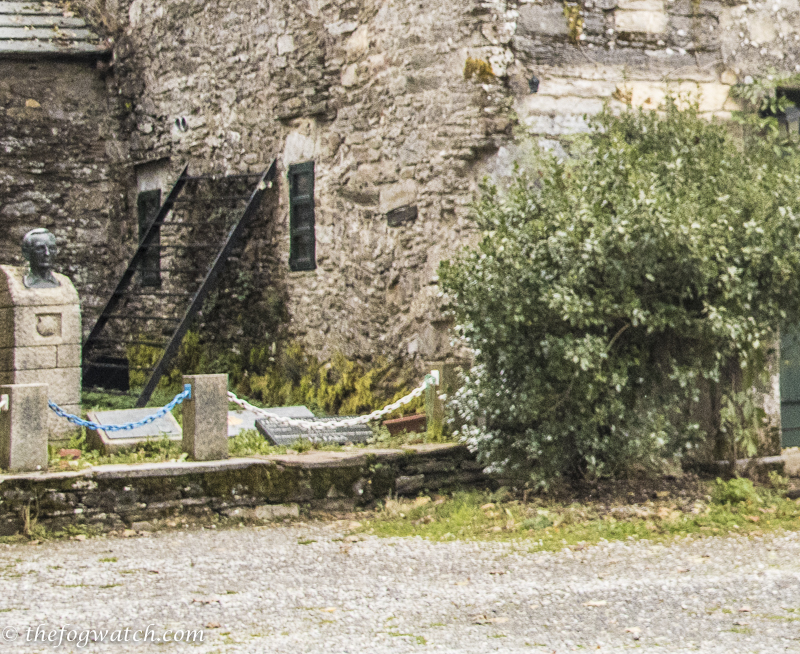

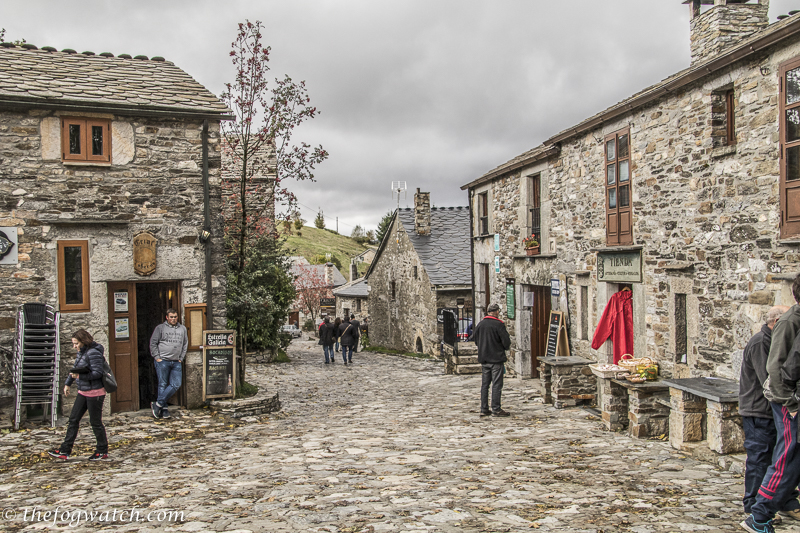
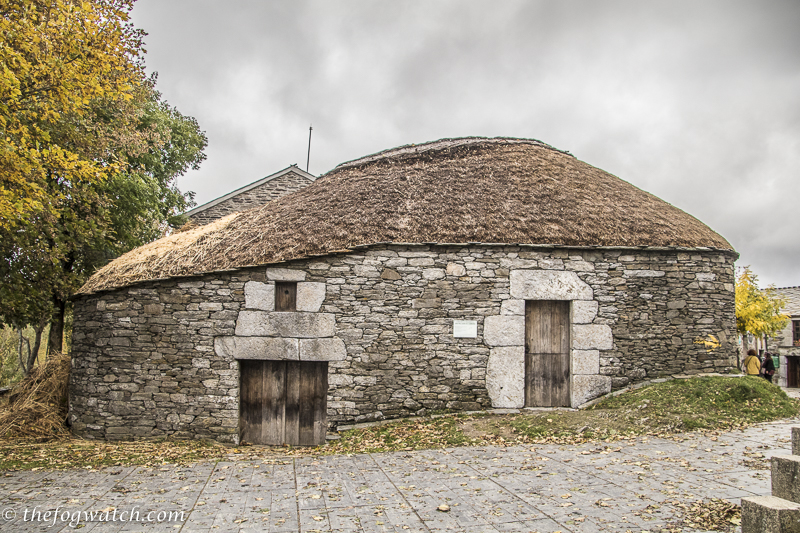
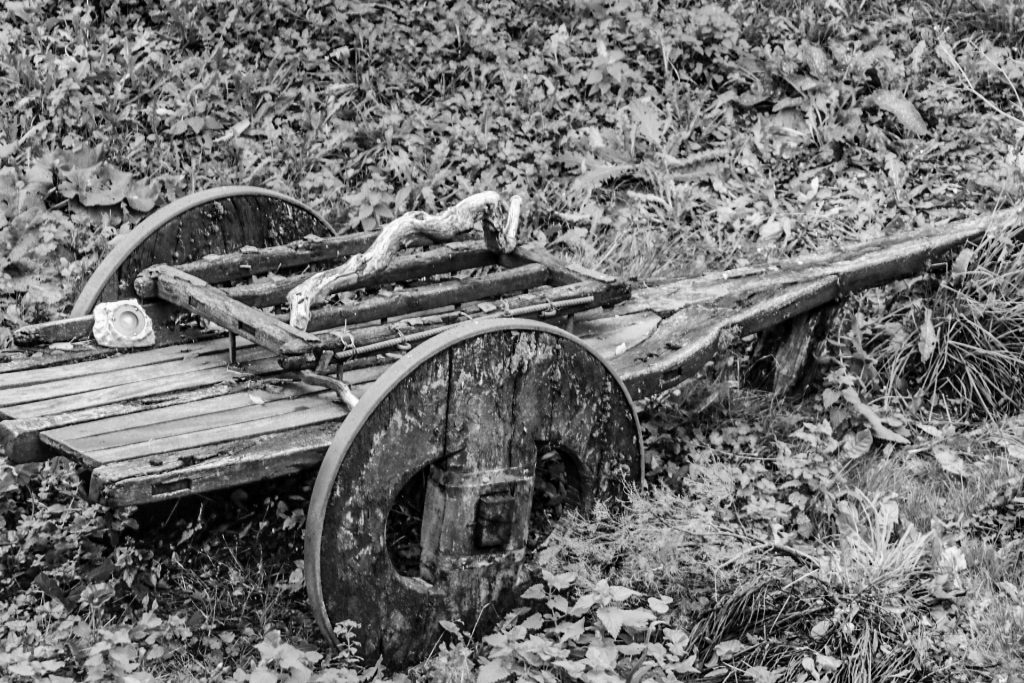
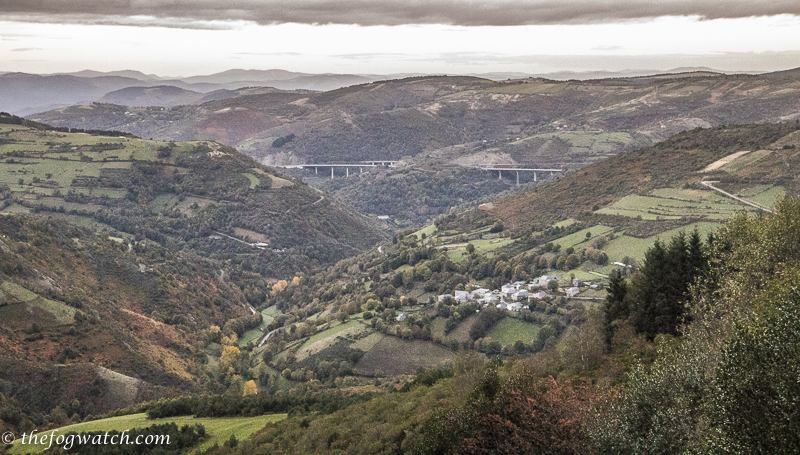
Wow bringing back memories of this road travelled 2018! So looking forward to my next Camino adventure! Portuguese Coastal in May!!
Thanks Elize – yes, Camino adventures are pretty special – we’ll be back for another one later this year too! 🙂
Hi Jerry, I loved O Cebriero. What a wonderful mountain top village. You really hit it on the nose in describing it. The church was my favorite next to the Santiago Cathedral. And yes we are very grateful that this priest painted those yellow arrows. Your photos are all very beautiful and captures the mood and magic of this little village.
Thanks Kathy – yes we loved the church there – and what an amazing history! And yes we would have been soooo lost without those arrows! 😀